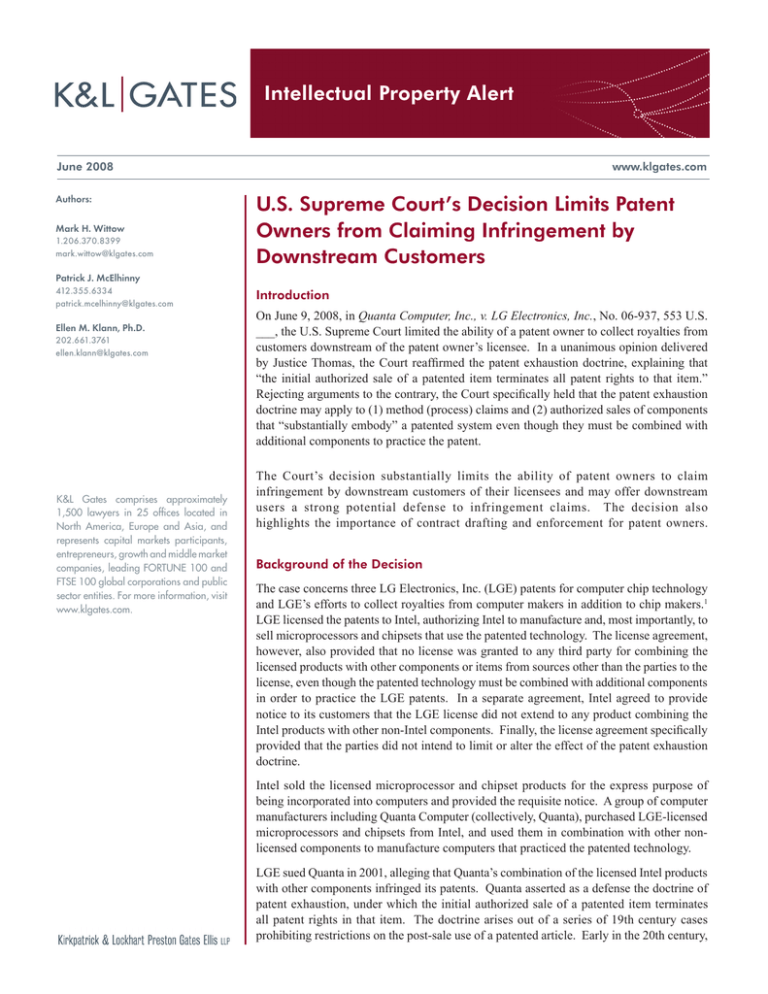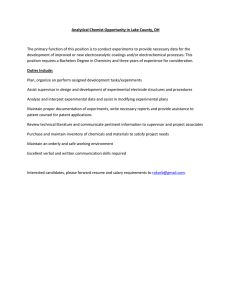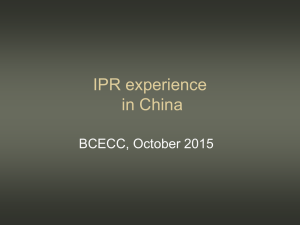
Intellectual Property Alert
June 2008
Authors:
Mark H. Wittow
1.206.370.8399
mark.wittow@klgates.com
www.klgates.com
U.S. Supreme Court’s Decision Limits Patent
Owners from Claiming Infringement by
Downstream Customers
Patrick J. McElhinny
412.355.6334
patrick.mcelhinny@klgates.com
Ellen M. Klann, Ph.D.
202.661.3761
ellen.klann@klgates.com
K&L Gates comprises approximately
1,500 lawyers in 25 offices located in
North America, Europe and Asia, and
represents capital markets participants,
entrepreneurs, growth and middle market
companies, leading FORTUNE 100 and
FTSE 100 global corporations and public
sector entities. For more information, visit
www.klgates.com.
Introduction
On June 9, 2008, in Quanta Computer, Inc., v. LG Electronics, Inc., No. 06-937, 553 U.S.
___, the U.S. Supreme Court limited the ability of a patent owner to collect royalties from
customers downstream of the patent owner’s licensee. In a unanimous opinion delivered
by Justice Thomas, the Court reaffirmed the patent exhaustion doctrine, explaining that
“the initial authorized sale of a patented item terminates all patent rights to that item.” Rejecting arguments to the contrary, the Court specifically held that the patent exhaustion
doctrine may apply to (1) method (process) claims and (2) authorized sales of components
that “substantially embody” a patented system even though they must be combined with
additional components to practice the patent.
The Court’s decision substantially limits the ability of patent owners to claim
infringement by downstream customers of their licensees and may offer downstream
users a strong potential defense to infringement claims. The decision also
highlights the importance of contract drafting and enforcement for patent owners.
Background of the Decision
The case concerns three LG Electronics, Inc. (LGE) patents for computer chip technology
and LGE’s efforts to collect royalties from computer makers in addition to chip makers.1
LGE licensed the patents to Intel, authorizing Intel to manufacture and, most importantly, to
sell microprocessors and chipsets that use the patented technology. The license agreement,
however, also provided that no license was granted to any third party for combining the
licensed products with other components or items from sources other than the parties to the
license, even though the patented technology must be combined with additional components
in order to practice the LGE patents. In a separate agreement, Intel agreed to provide
notice to its customers that the LGE license did not extend to any product combining the
Intel products with other non-Intel components. Finally, the license agreement specifically
provided that the parties did not intend to limit or alter the effect of the patent exhaustion
doctrine. Intel sold the licensed microprocessor and chipset products for the express purpose of
being incorporated into computers and provided the requisite notice. A group of computer
manufacturers including Quanta Computer (collectively, Quanta), purchased LGE-licensed
microprocessors and chipsets from Intel, and used them in combination with other nonlicensed components to manufacture computers that practiced the patented technology. LGE sued Quanta in 2001, alleging that Quanta’s combination of the licensed Intel products
with other components infringed its patents. Quanta asserted as a defense the doctrine of
patent exhaustion, under which the initial authorized sale of a patented item terminates
all patent rights in that item. The doctrine arises out of a series of 19th century cases
prohibiting restrictions on the post-sale use of a patented article. Early in the 20th century,
Intellectual Property Alert
the Court explained that “the right to vend is exhausted
by a single, unconditional sale, the article sold being
thereby carried outside the monopoly of the patent law
and rendered free of every restriction which the vendor
may attempt to put upon it.”2
Relying on the patent exhaustion doctrine, in 2002 the
District Court (N.D.Cal.) granted summary judgment
to Quanta. On appeal, in 2006 the Court of Appeals
for the Federal Circuit, which handles all patent
appeals from the district courts, ruled in favor of LGE. The Federal Circuit held that the patent exhaustion
doctrine did not apply to LGE’s method (as distinct
from apparatus) claims, and alternatively, that patent
exhaustion did not apply because the LGE-Intel license
agreement did not authorize Intel to sell its products
for use in combination with non-Intel components. In 2007, the Supreme Court granted certiorari, and
with over thirty amicus briefs filed, the case generated
considerable attention and varying positions.
The Supreme Court’s decision confirms
the availability of the patent exhaustion
doctrine as defense to patent infringement
claims
The Court’s decision clarifies three specific points
regarding application of the doctrine of patent
exhaustion.
First, the doctrine applies not only to apparatus
patents, but also to method patents. LGE had argued
that because a method is not a tangible article, the
related patent rights can be exhausted only through
an assignment of rights, not through the sale of a
product. The Court rejected that argument, reasoning
that (i) patented methods can be embodied in a product,
the sale of which will exhaust the patent rights of
the method patents; (ii) there is no basis in law to
distinguish between method and apparatus claims;
and (iii) to hold otherwise would allow an “end-run”
around the doctrine of patent exhaustion, as skilled
patent drafters “could shield practically any patented
item from exhaustion” by characterizing an invention
as a method instead of or in addition to an apparatus.3
Second, the Court concluded that exhaustion is triggered
by the sale of products that do not fully embody a
patent if the product’s only reasonable and intended
use is to practice the patent and the product embodies
the essential features of the patented invention. Under
the first prong of this test, the Court noted that LGE
had “suggested no reasonable use for the Intel products
other than incorporating them into computer systems
that practice the LGE Patents.” Under the latter prong
of this test, the Court found persuasive the facts that
everything inventive about each LGE patent was
embodied in the Intel microprocessors and chipsets
because the only other steps required to practice the
patents were “common and noninventive,” namely,
“the application of common processes or the addition
of standard parts.”4
Finally, the Court emphasized that “[e]xhaustion is
triggered only by a sale authorized by the patent holder.” Here, nothing in the LGE-Intel license agreement
restricted Intel’s right to sell its microprocessors
and chipsets utilizing the LGE patented methods to
purchasers who intended to combine them with nonIntel parts. LGE argued that the license agreement
specifically disclaimed any license to third parties to
practice the patent by combining the licensed products
with non-Intel components. However, the Court
held that, since the Intel sale itself was authorized
under the license agreement, no such implied license
was necessary if the patent rights were exhausted
after Intel’s sale of the licensed product to Quanta. Therefore, LG could not assert any of its patent rights
against Quanta.
Broader implications of the case and
recommendations for clients - contracts are
important, pick your targets
First, the case provides some lessons in contract
drafting. The LGE-Intel agreements were central to the
litigation, and the result likely would have been more
favorable to LGE had the license expressly limited
or conditioned Intel’s authority to sell the products
such that the sales to Quanta could have been found to
be unauthorized. Of course, that likely was an issue
LGE had to concede in its negotiations with Intel, and
LGE’s creative attempt to preserve control over use
of its intellectual property is now clearly foreclosed. Not all parties, however, will be in a position in which
they have to cede that control, but care is required
to maintain that control within the confines of this
decision. Note too that the Court specifically stated
(in footnote 7) that it expressed no opinion whether
contract damages might be available even though the
patent exhaustion doctrine eliminated the claim for
June 2008 | 2
Intellectual Property Alert
patent damages. In this case, the litigation defendants
were not parties to an agreement with the patent
holder. Therefore, nothing in the decision should limit
contractual restrictions in a patent license from being
enforced against a party to the contract.
If you are patent owner, you either need to collect your
patent royalties from one place in the manufacture distribution chain, or rely on contractual restrictions
that you can enforce directly against your contract
partner.
Second, the Court’s decision means that careful thought
is required when considering an overall licensing
program. As a result, patent owners faced with an
array of licensing options in a supply chain must realize
that a license anywhere in the chain may limit options
further down the chain. Accordingly, care should be
taken to select licensees who can best pay royalties, are
most likely to comply with contractual restrictions, and
are most likely to encompass the broadest array of uses. If you want to restrict downstream uses of your patents,
expect to put those restrictions in a contract and to
enforce the restrictions with the contractual party, not
downstream users. Likewise, the pricing of any license
must take into account the potential limits on enforcing
the patent against other downstream users. In non-royalty situations, such as cross-licensing,
companies may be able to use non-assertion clauses,
or covenants not to sue, that explicitly do not include
downstream parties. However, if the patent nonassertion provisions essentially are just a disguised
license for value, there is no guarantee that the patent
exhaustion doctrine would not be deemed to apply
in those circumstances. Additionally, patent owners
might try to follow the example of the software
industry and, when possible, license the use of any
patented products, instead of simply “selling” them,
as only authorized sales trigger patent exhaustion. Licensing instead of an outright sale, however, will not
be practical in many situations.
Third, accused infringers now need to consider
whether they can benefit from upstream licenses. If
you are downstream user and are asked to take a patent
license, or are sued for infringement, find out if your
supplier (or your supplier’s supplier) was licensed. Downstream customers who are not licensees now may
have a much stronger defense to patent infringement
claims for technology that has been licensed to an
intermediate party, even if that license is limited. Fourth, the decision may have some impact on the issue
of how the somewhat parallel “first sale” provisions of
copyright law interrelate with software license restrictions
such as prohibitions on the resale of used software.
Finally, the decision continues a line of recent Supreme
Court decisions narrowing the rights of patent holders
versus the rights of those selling or using patented
technology and overturning Federal Circuit decisions
in favor of patent holders. Patent litigation of late
appears to be a rare instance in which the Court is
setting a steady and (sometimes) unanimous course.
June 2008 | 3
Intellectual Property Alert
1 U.S. Patent Nos. 4,939,641 (‘641), 5,379,379 (‘379) and 5,077,733 (‘733). The ‘641
patent addresses the problem of coordinating data stored in both random access memory
and cache memory, by disclosing a system for monitoring data requests and updating the
main memory from the cache memory so that consistent data versions are maintained
in both the main and cache memories. The ‘379 patent provides a method to coordinate
requests to read from, and write to, the main memory in a speedy and accurate way. The
‘733 patent describes a method to manage data traffic on a “bus” (a set of wires that
transfers data between the microprocessor and devices such as the keyboard, mouse, and
disk drives) by using a system of rotating priority access to the bus for each device.
2 Motion Picture Patents Co. v. Universal Film Mfg. Co., 243 U.S. 502, 516 (1917).
3 T
he Court cited Ethyl Gasoline Corp. v. United States, 309 U.S. 436, 446, 457 (1940),
where the sale of a patented motor fuel also exhausted the rights of a related patent for
the method to use the fuel in combustion motors.
4 O
n this point, the Court discussed at some length United States v. Univis Lens Co., 316
U.S. 241 (1942). Univis held that “where one has sold an uncompleted article which,
because it embodies essential features of his patented invention, is within the protection
of his patent, and has destined the article to be finished by the purchaser in conformity to
the patent, he has sold his invention as far as it is or may be embodied in that particular
article.” Id. at 250-251.
This publication/newsletter is for informational
purposes and does not contain or convey legal advice.
The information herein should not be used or relied
upon in regard to any particular facts or circumstances
without first consulting a lawyer.
K&L Gates comprises multiple affiliated partnerships: a limited liability partnership with the full name Kirkpatrick & Lockhart Preston Gates Ellis LLP
qualified in Delaware and maintaining offices throughout the U.S., in Berlin, in Beijing (Kirkpatrick & Lockhart Preston Gates Ellis LLP Beijing
Representative Office), and in Shanghai (Kirkpatrick & Lockhart Preston Gates Ellis LLP Shanghai Representative Office); a limited liability
partnership (also named Kirkpatrick & Lockhart Preston Gates Ellis LLP) incorporated in England and maintaining our London and Paris offices; a
Taiwan general partnership (Kirkpatrick & Lockhart Preston Gates Ellis) which practices from our Taipei office; and a Hong Kong general
partnership (Kirkpatrick & Lockhart Preston Gates Ellis, Solicitors) which practices from our Hong Kong office. K&L Gates maintains appropriate
registrations in the jurisdictions in which its offices are located. A list of the partners in each entity is available for inspection at any
K&L Gates office.
This publication/newsletter is for informational purposes and does not contain or convey legal advice. The information herein should not be used
or relied upon in regard to any particular facts or circumstances without first consulting a lawyer.
Data Protection Act 1998—We may contact you from time to time with information on Kirkpatrick & Lockhart Preston Gates Ellis LLP seminars and
with our regular newsletters, which may be of interest to you. We will not provide your details to any third parties. Please e-mail
london@klgates.com if you would prefer not to receive this information.
©1996-2008 Kirkpatrick & Lockhart Preston Gates Ellis LLP. All Rights Reserved.
June 2008 | 4



